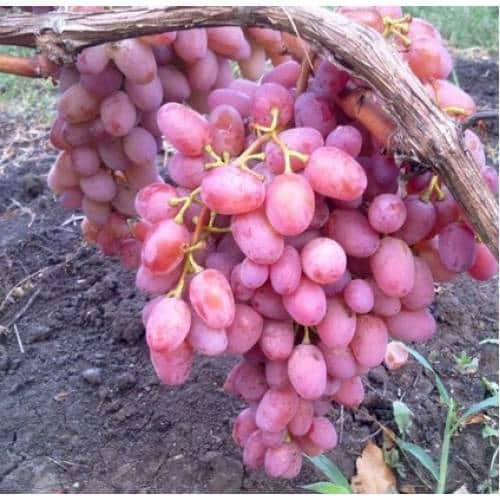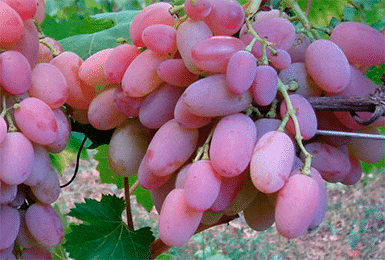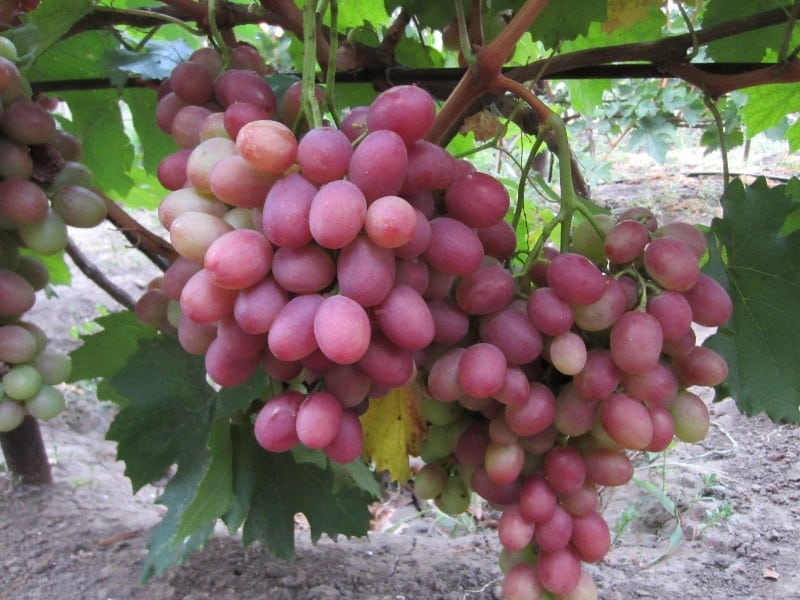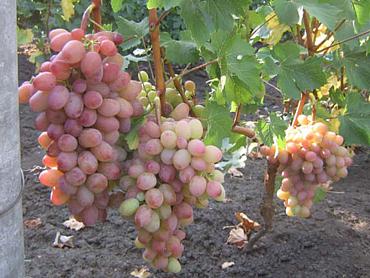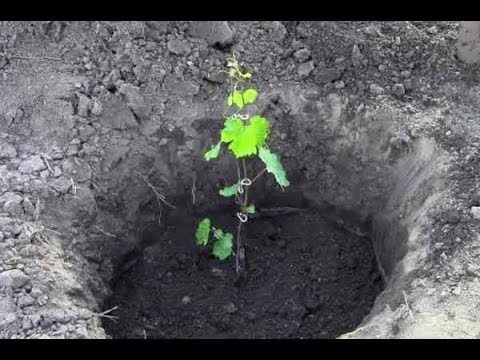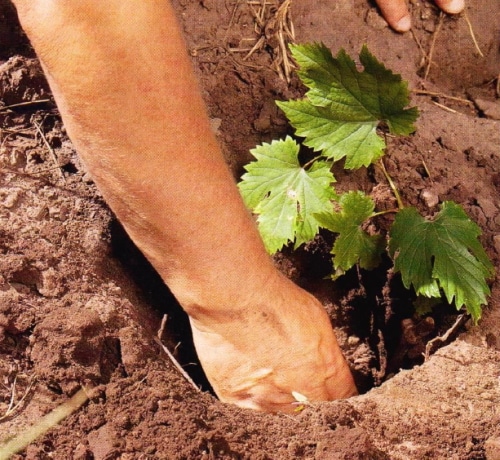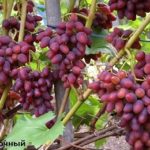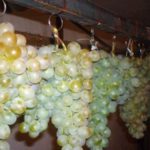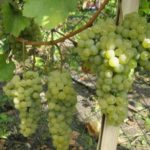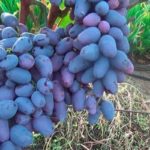An excellent solution for gardeners with small plots. Vodograi is an unpretentious grape with positive characteristics. Among summer residents it is famous for the fact that it produces a stable high yield and does not require special care.
- Vodograi grape variety
- Historical reference
- Bush structure
- Pros and cons of the culture in question
- Plant Characteristics
- Productivity
- Common diseases and pests
- Frost resistance
- Description of bunches and berries
- Reproduction methods
- Planting seedlings
- In the open ground
- Rooting process
- We grow and care for
- How to trim correctly
- Irrigation and fertilization
- Disease and pest control
- How to cover grapes for the winter
Vodograi grape variety
To get to know the plant better, you need to study its description. This information will help prevent mistakes when growing.
Historical reference
The variety was created by V.V. Zagorulko, a Ukrainian breeder who developed more than one magnificent variety. When crossing, 2 varieties were used:
- Kishmish;
- Arcadia.
The result was the Vodograi variety, which inherited all the positive characteristics from its parents.
Bush structure
The shoots have a greenish tint for up to a year, but by autumn they turn brown. The leaves are small, dissected, and five-lobed. The flowers are bisexual, racemes are formed even on the stepsons. The bushes are vigorous, the root system is powerful.
Pros and cons of the culture in question
Vodograi grapes have enough advantages to gain recognition among gardeners.
Pros:
- high, stable yield;
- low maintenance requirements;
- excellent taste characteristics;
- versatility of application;
- high immunity;
- long shelf life;
- the ability to endure transportation over long distances without losing its presentation.
Minuses:
- average frost resistance;
- fruits may fall off the brushes during transportation.
The Vodograi variety has more positive qualities than negative ones, which is why it is becoming popular among gardeners.
Plant Characteristics
When choosing a variety, the gardener looks for a description of the plant. The better the indicators, the more likely it is that grapes will grow on the site.
Productivity
The volume of the harvest depends on the diligence of the summer resident. Fulfilling all the requirements and subtleties of cultivation leads to obtaining the declared yield. The brush reaches a size of 2 kg, respectively, the total yield per bush is 18-22 kg.
Common diseases and pests
The field health of Vodograi grapes is excellent. The variety resists:
- mildew;
- oidium.
To consolidate the results, preventive treatments of plants are used in spring and autumn. Following agricultural techniques will also protect the bushes from viruses and fungi.
Treatment with chemicals or folk remedies is recommended against pests.
Frost resistance
Vodogray is able to withstand temperatures down to -20 ⁰C. When grown in northern regions, the vines need to be covered for the winter. Gardeners practice sprinkling with soil.
Description of bunches and berries
The shape of the brush is conical, loose, the average weight is 1.1 kg. The berry weighs 10 g. The skin color is light pink or more saturated if the bunch grew in the sun. The taste is excellent, the use of Vodograi grapes is universal. The fruits are used for canning and consumed fresh.
Reproduction methods
There are several ways to independently propagate grapes. These include cuttings, seed propagation and grafting. Vodograi cuttings take root well. The rootstock fuses with the scion without any problems. When propagating from cuttings, planting material is prepared in the fall. And they are planted in the ground in the spring in March. All this time, the cut cuttings are stored in a damp cloth in the basement with a relatively stable temperature.
Vaccination is carried out in the summer. During the season, the rootstock and scion grow together, and the plant prepares for winter. Propagation by seeds is the longest process, since the gardener will wait for the first fruits after 5-6 years. The disadvantage of this method is that the parental genes are not preserved.
Planting seedlings
Proper planting is the key to ensuring that the future plant grows strong and viable. By fulfilling simple requirements, even a beginner can grow Vodograi grapes on the plot.
In the open ground
Choose a sunny area, protected from drafts.Dig a planting hole, the size of which depends on the root system of the seedling. It should be wide and deep.
A drainage layer is laid on the bottom, then filled with a fertile layer of soil mixed with humus and minerals. The seedling is planted in a hole, covered with soil, watered with plenty of water, and mulched.
Rooting process
In order for plants to take root faster, it is necessary to strictly follow the planting procedure. Apply fertilizing in a timely manner and do not allow the seedlings to dry out. If you follow these simple requirements, the rooting process will be quick and painless for the plants.
We grow and care for
After the seedling is established, it is necessary to properly care for it. Timely compliance with agricultural technology standards will help plants form a strong root system and a powerful above-ground part.
How to trim correctly
It is recommended to unload the vine, because excess shoots make the bush weaker. This is done in the fall, the fruiting shoots are cut off, leaving 8 eyes, it no longer makes sense.
Irrigation and fertilization
Watering for Vodograi grapes, as for other varieties, is necessary. Gardeners recommend strictly ensuring that the plants do not dry out. But overwatering also threatens the death of the root system and the plant itself. At first, the seedlings are watered 1-2 times a week. The amount of water per plant is calculated by the gardener himself, since the growing climatic conditions are different.
An adult plant is watered at least 4 times:
- before flowering;
- before ripening;
- after harvest;
- in preparation for winter.
The amount of water is also calculated taking into account the composition of the soil.
Disease and pest control
Be sure to carry out preventive work.It consists not only of spraying with fungicides, but also of performing standard agronomic practices for any crop. These include:
- timely moderate watering;
- loosening and mulching;
- weed removal;
- pruning or crown formation;
- feeding.
Properly planted seedlings are protected from the harmful effects of viruses and fungi. If there is a need to treat the vine in the summer, then do it carefully, without using chemicals during the fruiting period and a month before it. Summer residents recommend using folk remedies; their effect is short-lived, but they are safe for human health.
How to cover grapes for the winter
This is done in regions with cold winters, in those areas where the winter temperature drops below -21 ⁰C. For high-quality shelter, special polyethylene or other material is used. Purchase it in specialized stores. In areas with risky farming, soil spreading is practiced. Vodograi grapes perform well in small areas. It does not require much care. It produces an excellent harvest and is suitable for decorating gazebos and other buildings.


